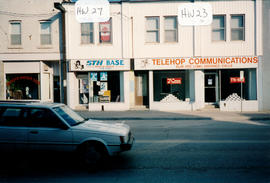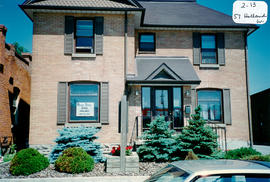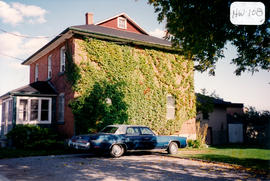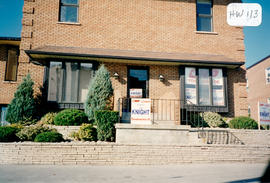- CA BWGPL GJ-HB-2017-03-28-02
- Unidad documental simple
- 1997
Parte deGeorge Jackson fonds
The original building located at 4 Holland St. West (on the southwest corner of Holland and Simcoe Streets) was built in the 1840’s and was situated on land originally owned by James Drury. He was one of the early immigrants who reached Upper Canada. Drury rented the corner lot to Thomas Driffill (a blacksmith), who opened a hardware store at that location. The lot was later sold to Robert Cooke, who leased the property to Driffill for another 20 years. Thomas Driffill became the village of Bradford’s first reeve when it was incorporated in 1857. The great fire of 1871 destroyed all but the building’s foundation. It was rebuilt incorporating the intact, old vault and locally-made bricks. Thomas Driffill bought the building in 1885, eventually retired, and left the business to his sons, Joseph and James, who eventually sold it to Andrew Thompson, Driffill's partner. It became Thompson's Hardware. A series of different owners and different types of enterprises followed. William Barron bought the building in 1946 and relocated his hardware business to this site. He made several renovations, including adding a new stone façade, new plate glass windows, and an elevator to facilitate deliveries to the tinsmithing shop upstairs. He retired and left the business to his son Norman. The building later became a motorcycle shop, and eventually, for several years, the Winchester Arms Restaurant. (1, 2, 4, “Four Holland Street West: A Short History” by Lorraine Philip - Bradford West Gwillimbury Public Library, Local History Collection).
Sin título










